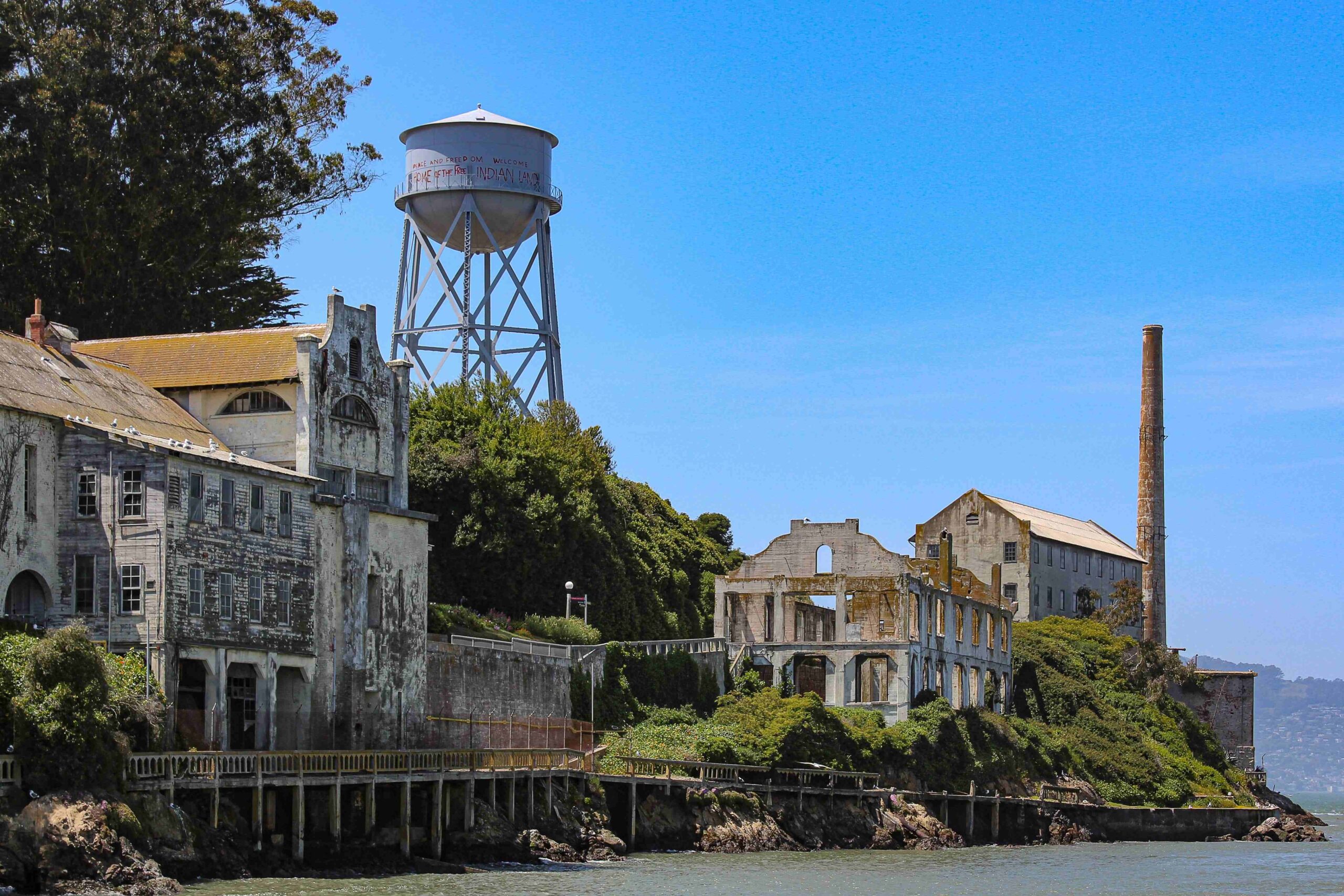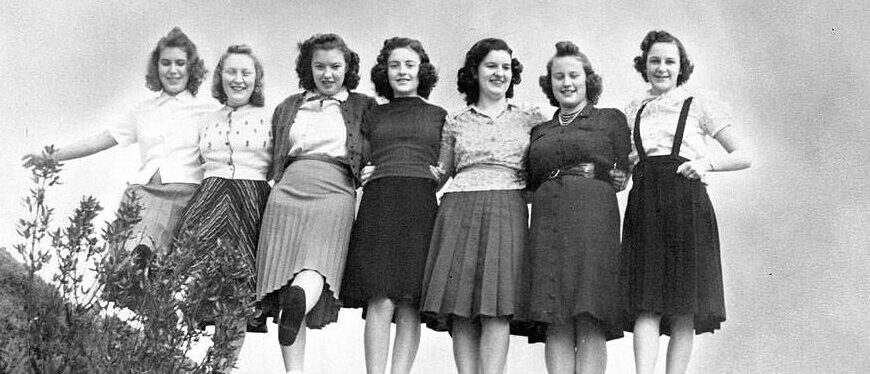
Growing Up on Alcatraz: Q&A With a Former Resident
When you think about Alcatraz, you might think about those who were imprisoned there. But “The Rock” wasn’t just home to some of the most notorious criminals in American history. It was also home to prison staff and their families — and yes, that included children.
Among them was Jolene Babyak, who lived on Alcatraz at two different times in her life while her dad worked as a prison administrator. It’s fascinating to hear Babyak’s recollections of living on the famous island. Her descriptions of everyday life for prison guard families, which I’ll share below, add a rich layer to the unique history of Alcatraz.
Babyak said her family first moved to Alcatraz when she was 7 years old. They eventually moved to San Francisco after a couple of years. When she was 15, her father became the associate warden, and the family moved back to Alcatraz.
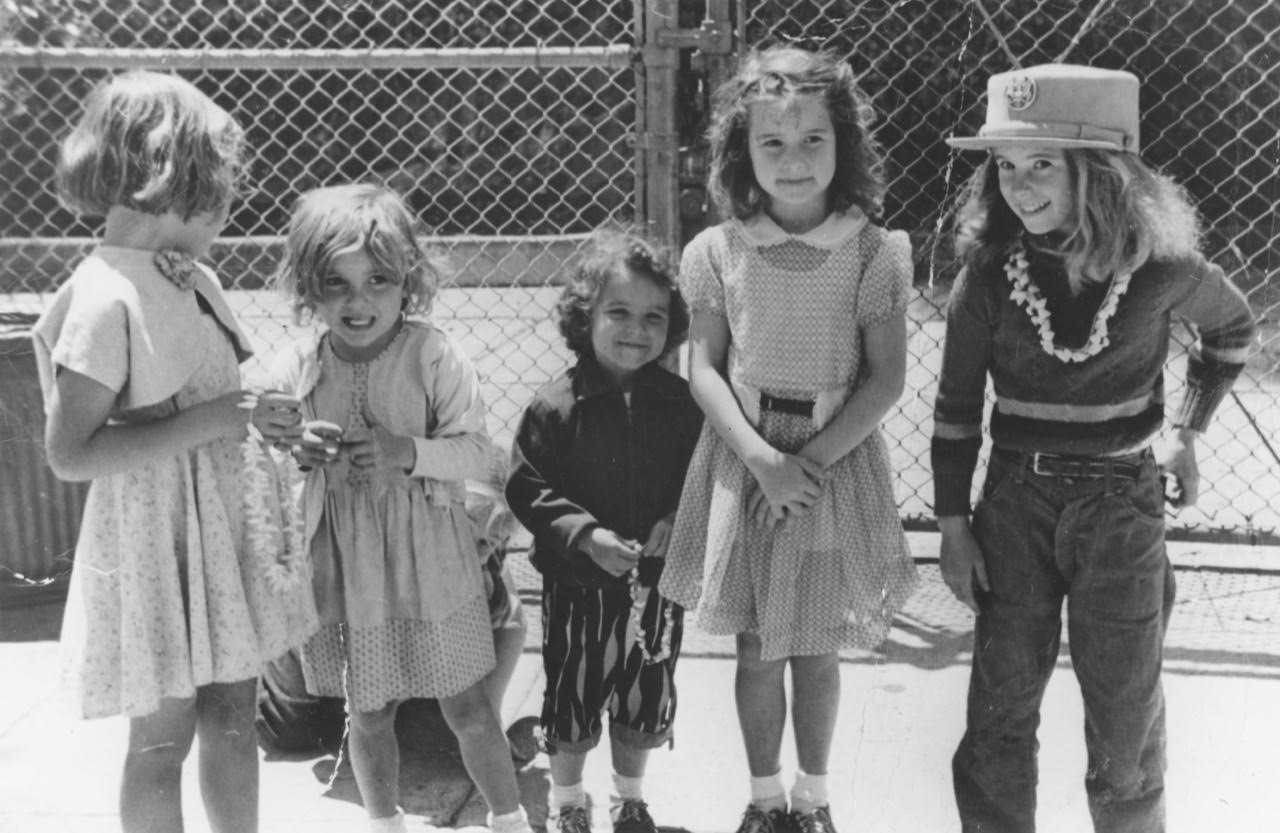
She’s returned to the island since then as a guest rather than a resident, sharing her memories of life on the island. Here’s a photo of Babyak visiting Alcatraz just last year.
Babyak said that during her family’s first move to Alcatraz Island, there were as many as 75 children living in the community. She has nothing but fond memories of living on Alcatraz and called it the “best neighborhood” you could ever live in. Because of security issues, the adults on the island were especially attentive to the children, Babyak said.
There were plenty of events and gatherings taking place to keep everyone busy. And she and the other children got to ride a boat to San Francisco to get to school — pretty cool, right?
Babyak remembers one unnerving moment during the infamous 1962 escape. Four prisoners plotted for months on their escape plan, which involved paper mache heads to conceal their absence in their cells. Three were able to climb up the roof and down the cellhouse building, using a stitched-up raft to enter the San Francisco Bay waters. They were never found, and it’s unclear whether they made it to the mainland or if they died.
In this Q&A, Babyak who is 77, recalls her time on Alcatraz Island and some of the little-known rules for those living there.
Moving to Alcatraz
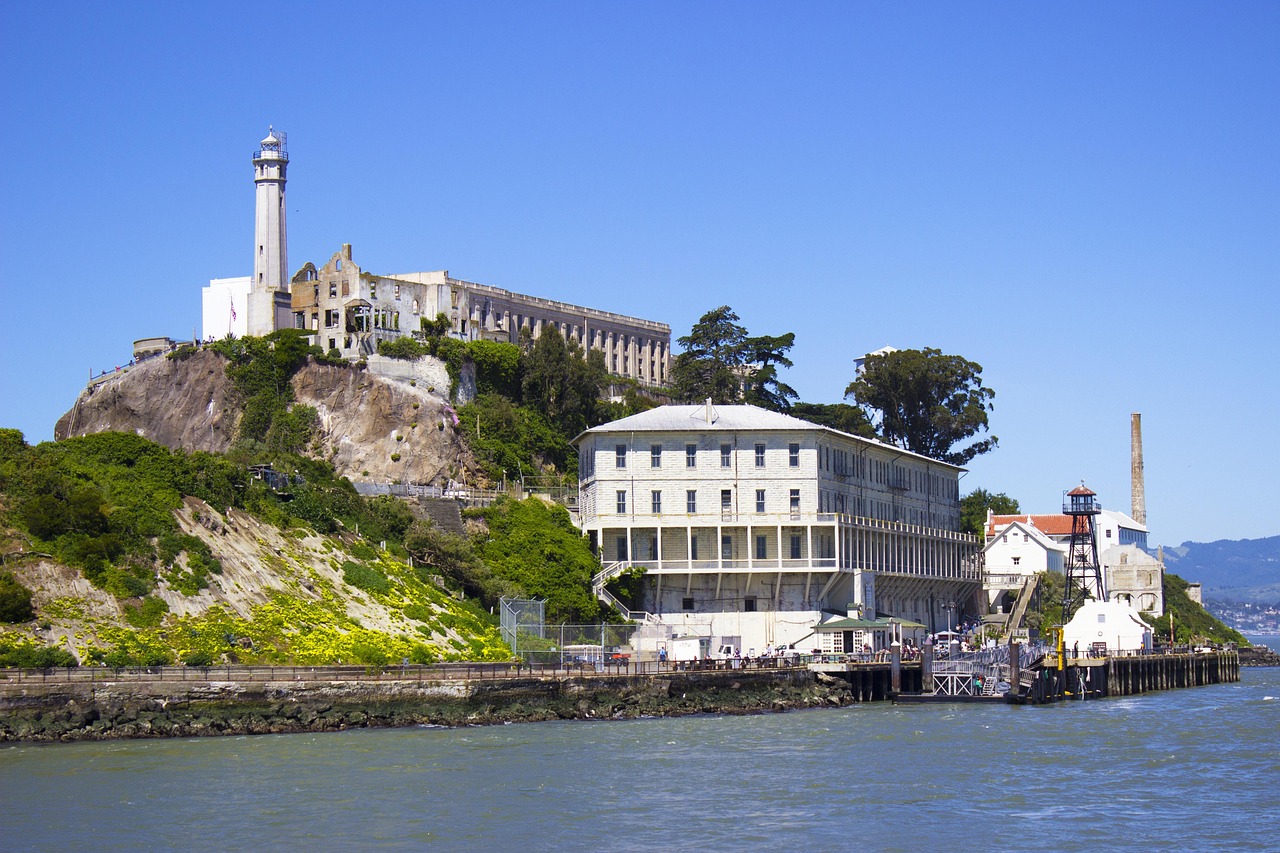
What was it like to move to Alcatraz?
For me, it was like Dorothy in the Wizard of Oz — going from a Kansas farm to the Emerald City. I mean, it was spectacular and lovely.
We arrived in April of 1954. And I was taken to San Francisco by my parents and started school. I probably didn’t even see any prisoners because I was at school the same hours that a few outside workers could be seen.
For me, it was like Dorothy in the Wizard of Oz — going from a Kansas farm to the Emerald City.
By the time I got back, they were probably in the cellhouse. So I only saw prisoners in the summertime and only from a distance. And they would wave at us, you know, I was 7 or 8, and they would wave at us as a little kid.
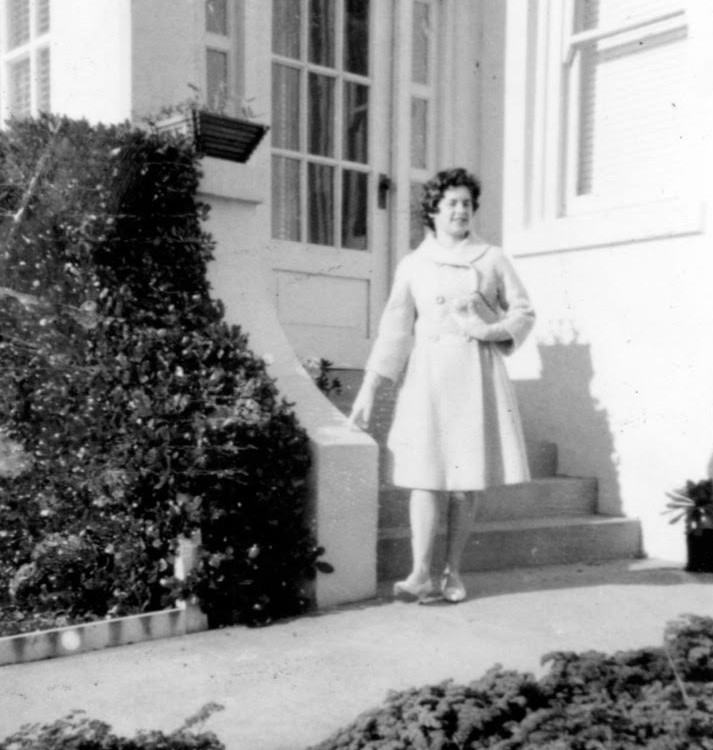
When I was 15, I didn’t look at them long enough to get their attention because that was more awkward for me. But as a little kid, we were kind of shy about it and kind of thrilled that they noticed us.
Life on “The Rock”
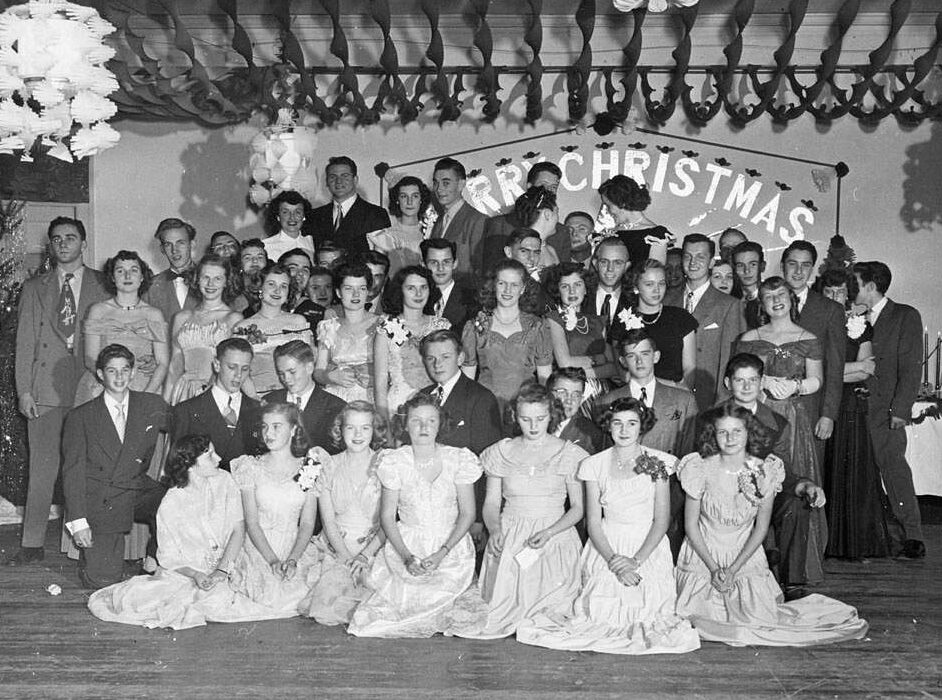
Where exactly were the families compared to the prison?
So the island is in the shape of a boat, right? And the prison is up top, right? Our housing… is over on the east side of the island. You’ll see pictures with a big, flat concrete space and there’s apartments around it.
The prisoners were focused on the opposite side of the island. And they escaped in that direction. They never came down to our area on escapes.
What was life on the island like?
From the very beginning, people started having annual events. The teenagers always had dances, and we could invite kids over from the city. All of our dates wanted to come over. We would hop on the boat and go get them and bring them over. And the midnight boat will take them back.
The teenagers always had dances, and we could invite kids over from the city. All of our dates wanted to come over.
We had a Western party every year where everybody dressed up and did skits, and it was totally silly, and we had potlucks every month where the kids often would serve the coffee or serve the desserts, and everybody [would] bring down a wonderful dish.
All kinds of adult things like retirement parties, but it was fun for the kids too because they were always involved.
And it was just wonderful. That was the reason I think why everybody loved it so much is because the community was actively involved in our lives. And that is a good thing.
Was there a group of parents in charge of activities?
Yeah, there were people that sort of took charge, depending on their personality.
When I was a little kid, the captain of the guards, Phil Bergen, he was kind of a gruff. He took it upon himself to organize a children’s garden and we had a little contest. And so every Saturday we’d be out there digging, and planting and dragging over water and watering our plants and painting our names on the seawall.
There was a soda fountain, and they made sure they had all the Cokes and ice creams.
There were men that took care of the bowling alley. There was a little two-lane bowling alley left over from the military days. There were people that would chaperone. The bowling alley was down at the Officer’s Club, and you could go there at night or if there was an event. You couldn’t just wander down there during the day. That was closed off.
Everything was closed until the prisoners were in their cells — in the cellhouse and in their cells. Then the men that would take care of the bowling alley. They would go down there and open it up, and there was a soda fountain, and they made sure they had all the Cokes and ice creams.
How did you get supplies and things that you needed to the island?
You went to the city. I mean, there was a little store [on the island] for surprise needs: cigarettes, wonder bread, bacon, ice cream sandwiches, and popsicles. I don’t think they sold any liquor or anything like that, but just all the necessities. You went to the city, the Safeway or wherever, and you bought your supplies and then came over on the boat.
Everything was on the boat. If you bought a Christmas tree, a real Christmas tree, you brought it over on the boat. Consequently, you didn’t buy too much.
Rules of Alcatraz and what happens when there’s an escape
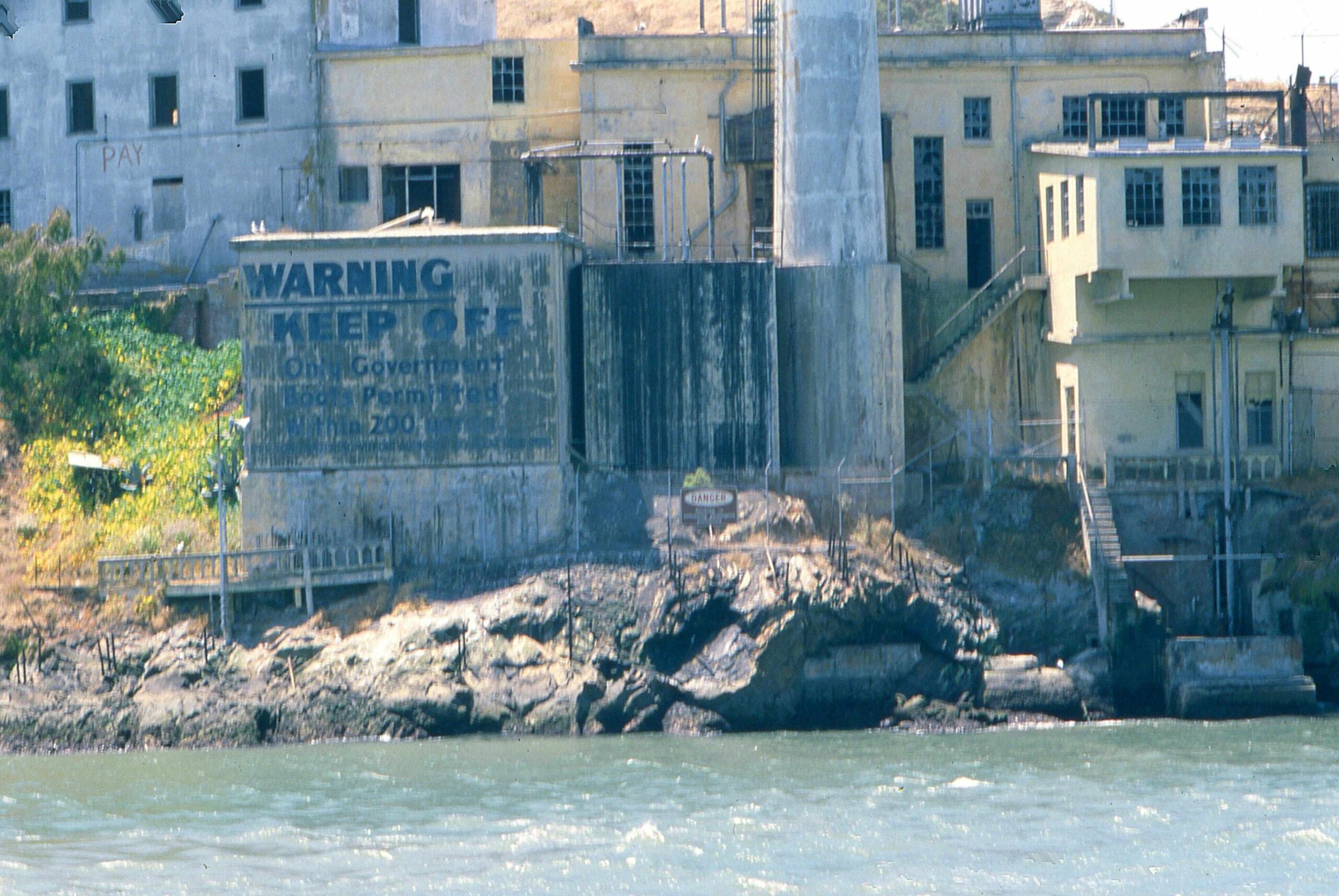
What rules were in place that people might find interesting?
Absolutely no contact and no talking to prisoners — No. 1 rule.
Prisoners were not allowed to yell at us or whistle or nothing. They can wave at the little kids. But beyond that, they never gestured to us. You didn’t go down to the dock unless you were getting on the boat because there were prisoners that worked on the dock. And they would always stop whenever the boat docked.
The key to the motor went up a lanyard to the tower officer. He kept the key. And he was an armed guard who was of course watching the prisoners. And then we would file in on and off the boat. So those were big rules. Two thirds of the island was off limits.
Absolutely no contact and no talking to prisoners — No. 1 rule… Two thirds of the island was off limits.
I’ll tell you something else that I think is kind of interesting. The garbage was collected by the prisoners. So you had two prisoners and a guard driving the truck, and they would go around and pick up the garbage. So you had to be very, very, very careful about what you put in the garbage. No utensils, no metals, no broken glass, no newspapers. Those of us who had newspapers, those had to be wrapped up and set aside.
What do you remember of the 1962 escape?
I was 15. The siren woke me up and I’d never heard it before, but you couldn’t mistake it. It was a very loud and very aggressive siren, and it woke everybody up.
My mother was in the house with me, and she met me on the stairs, and she said, “Get dressed, there’s been an escape, we have to search the house.”
And I’m sure my first question was, “Do you think they’re still here?” And being the practical woman, she said, “Nah, they probably left last night.”
So I was like, “Oh, OK.” And I was late for school. But I didn’t even have to bring a note. So that was cool.
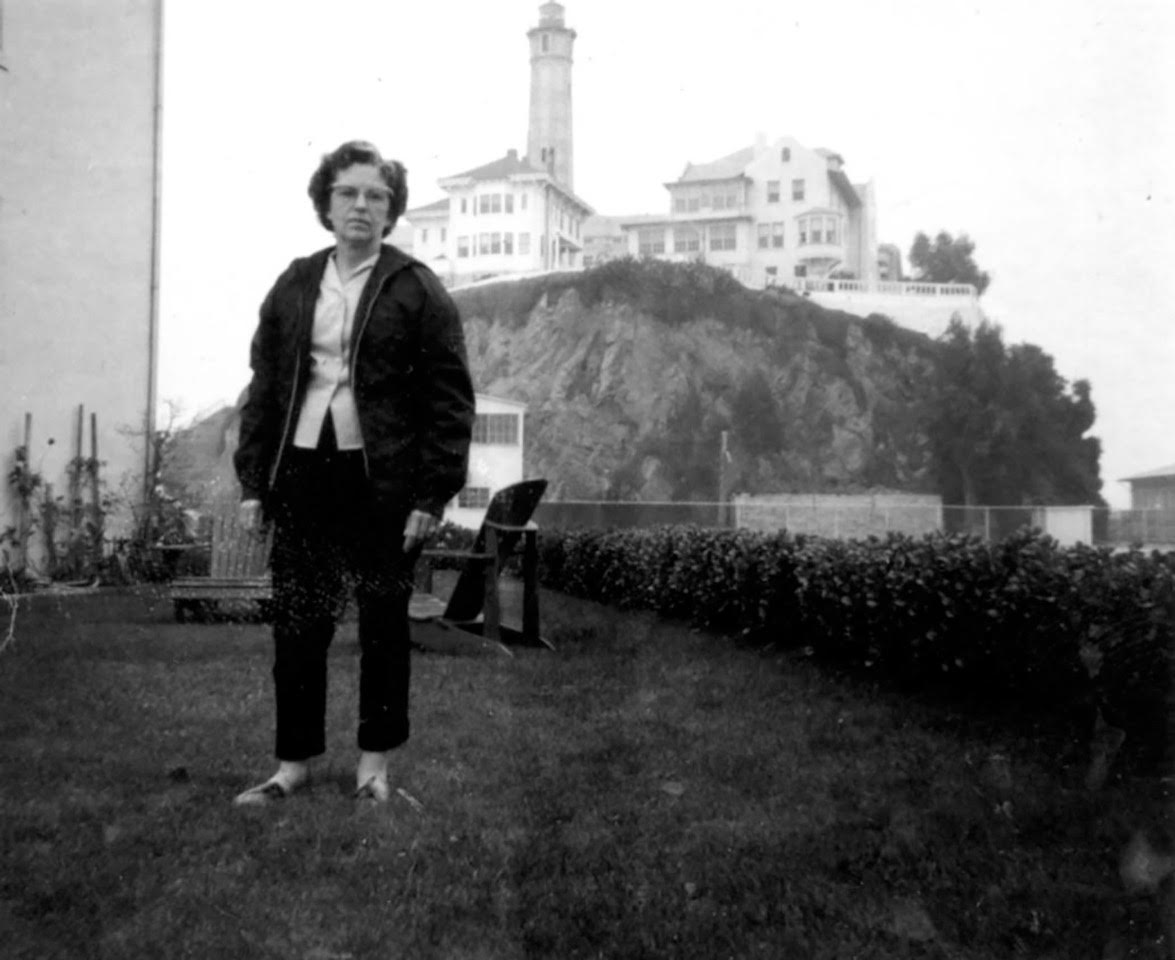
The island was locked down for four hours, four or five hours. In movies, things get all chaotic and scary. But in real life, things tamp down. Everything stops. And then there was a lot of brouhaha because they were never found.
Alcatraz today

I hope you enjoyed this interview with someone who actually lived on Alcatraz Island! A lot has changed here since the island became part of the National Parks Service, opening to tourists in 1973.
But for many years, The Rock was truly just another San Francisco neighborhood for prison guard families — albeit a very unique one in the middle of the Bay. When visiting Alcatraz, take time to enjoy the natural beauty, including its gardens and birds, and get a closer look at the many historical structures beyond the infamous cellhouse. There’s so much to see here.
Experience it all when you sign up for one of our tours, which include a cruise to this fascinating national landmark.
